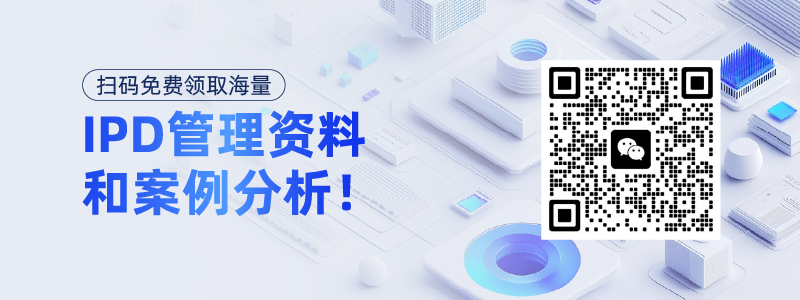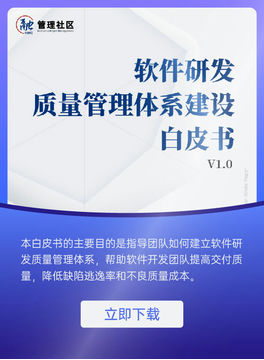Xiaomi, a globally recognized technology company, has achieved remarkable success in a highly competitive market. Central to its achievements is the implementation of the Integrated Product Development (IPD) process. The IPD process at Xiaomi is not just a set of procedures but a comprehensive system that streamlines product development from concept to market launch. It aims to enhance product quality, reduce time to market, and optimize resource utilization.
At the heart of Xiaomi's IPD process is the integration of various functions and departments. This is crucial as it breaks down the traditional silos that often impede efficient product development. By bringing together teams from R&D, marketing, sales, manufacturing, and other relevant areas, Xiaomi can ensure that all aspects of a product are considered from the very beginning. This holistic approach helps in creating products that not only meet but exceed customer expectations.
The IPD process also emphasizes the importance of market-driven product development. Xiaomi closely monitors market trends, customer needs, and competitor activities. This information is then used to guide the product development process, ensuring that the products developed are relevant and competitive in the market. This market orientation is a key factor in Xiaomi's ability to introduce innovative products that capture the imagination of consumers worldwide.
Cross - Departmental Collaboration in Product Conceptualization
The first stage of cross - departmental collaboration in Xiaomi's IPD process is product conceptualization. Here, marketing teams play a vital role in identifying market opportunities. They conduct in - depth market research, analyze consumer preferences, and study emerging trends. This information is then shared with R&D teams, who start to explore the technological feasibility of turning these market ideas into actual products.
For example, if the marketing team identifies a growing demand for smartphones with better battery life and faster charging capabilities, they will communicate this to the R&D department. The R&D team, in turn, will research new battery technologies, charging algorithms, and component designs that can meet these requirements. This interaction between marketing and R&D ensures that the product concept is both market - relevant and technically achievable.
Manufacturing teams also get involved at this stage. They provide insights into the production processes and costs associated with the proposed product concept. This helps in evaluating the economic viability of the product. If a particular design requires complex manufacturing techniques that would drive up costs significantly, the cross - departmental team can work together to find alternative solutions that balance performance, cost, and manufacturability.
Collaboration in Product Design and Development
Once the product concept is finalized, the cross - departmental collaboration intensifies during the design and development phase. R&D teams take the lead in designing the product's technical architecture, including hardware and software components. However, they do not work in isolation. Industrial design teams collaborate with R&D to create an aesthetically pleasing and user - friendly product design.
For instance, when designing a new smartwatch, the industrial design team will focus on aspects such as the shape, size, and material of the device to ensure it is comfortable to wear and visually appealing. At the same time, the R&D team will be working on integrating sensors, processors, and communication modules into the design. This collaboration ensures that the product not only looks good but also functions optimally.
Quality assurance teams also become actively involved during this stage. They set quality standards and conduct regular reviews to ensure that the product meets these standards. They work closely with R&D and manufacturing teams to identify and address any potential quality issues early in the development process. This proactive approach to quality control helps in reducing the number of defects and recalls, thereby enhancing Xiaomi's brand reputation.
Supply Chain and Manufacturing Collaboration
In the supply chain and manufacturing aspect of Xiaomi's IPD process, cross - departmental collaboration is essential for ensuring a smooth production flow. Procurement teams work closely with R&D and manufacturing to source the right components at the right time and at the right cost. They need to consider factors such as component availability, quality, and price.

For example, if a new product requires a specific type of high - performance processor, the procurement team will negotiate with suppliers to secure a reliable supply. They will also work with R&D to ensure that the components meet the product's technical requirements. Manufacturing teams, on the other hand, are responsible for setting up the production lines and ensuring efficient production processes.
Logistics teams also play a crucial role. They plan the transportation and storage of products and components. They need to coordinate with manufacturing and sales teams to ensure that products are delivered to the market on time. This seamless collaboration between procurement, manufacturing, and logistics teams helps in maintaining a lean and efficient supply chain, which is vital for Xiaomi's competitiveness.
Marketing and Sales Collaboration during Product Launch
As the product nears its launch, marketing and sales teams collaborate closely with other departments. Marketing teams develop comprehensive marketing strategies to create awareness and generate interest in the product. They work with R&D to understand the product's features and benefits so that they can communicate them effectively to the target audience.
For example, they will create product videos, brochures, and online content that highlight the unique selling points of the product. Sales teams, in turn, use this information to train their sales representatives and develop sales plans. They also provide feedback from potential customers to the product development teams, which can be used to make last - minute improvements or adjustments.
Customer service teams are also involved at this stage. They prepare to handle customer inquiries and support after the product launch. By collaborating with other departments, they can ensure that they have the necessary knowledge and resources to provide excellent customer service. This integrated approach to product launch helps in maximizing the product's market impact and sales performance.
Challenges and Solutions in Cross - Departmental Collaboration
Despite the many benefits of cross - departmental collaboration in Xiaomi's IPD process, there are also challenges. One of the main challenges is communication barriers. Different departments may have different terminologies, work cultures, and priorities, which can lead to misunderstandings. For example, R&D teams may focus on technical details, while marketing teams may be more concerned with marketability.
To overcome this challenge, Xiaomi has established regular communication channels. These include cross - departmental meetings, shared project management tools, and knowledge sharing platforms. These channels ensure that information is disseminated effectively across departments, reducing the chances of miscommunication.
Another challenge is the conflict of interests. For instance, manufacturing teams may want to optimize production costs, while R&D teams may be more focused on product performance. To address this, Xiaomi has a unified product vision and goals. All departments are aligned towards achieving these common goals, which helps in resolving conflicts and making decisions that are in the best interest of the overall product and the company.
Conclusion
In conclusion, cross - departmental collaboration is the cornerstone of Xiaomi's IPD process. Through effective collaboration in product conceptualization, design and development, supply chain and manufacturing, and product launch, Xiaomi has been able to develop innovative products quickly and efficiently. The company's ability to break down departmental silos and foster a culture of collaboration has enabled it to respond rapidly to market changes and customer needs.
Despite the challenges faced, Xiaomi's strategies for overcoming communication barriers and conflicts of interests have been successful. By continuously improving its cross - departmental collaboration mechanisms, Xiaomi can maintain its competitive edge in the global technology market. As the market continues to evolve, Xiaomi's experience in cross - departmental collaboration in the IPD process can serve as a valuable model for other companies looking to enhance their product development capabilities.
Moreover, the cross - departmental collaboration in Xiaomi's IPD process not only benefits the company internally but also has a positive impact on its external relationships. By delivering high - quality products in a timely manner, Xiaomi can strengthen its relationships with customers, suppliers, and partners. This holistic approach to product development through cross - departmental collaboration is likely to drive Xiaomi's continued success in the future.
ARTICLE TITLE :Unveiling the cross-departmental collaboration mechanism in Xiaomi's IPD process ,AUTHOR :ITpmlib

















